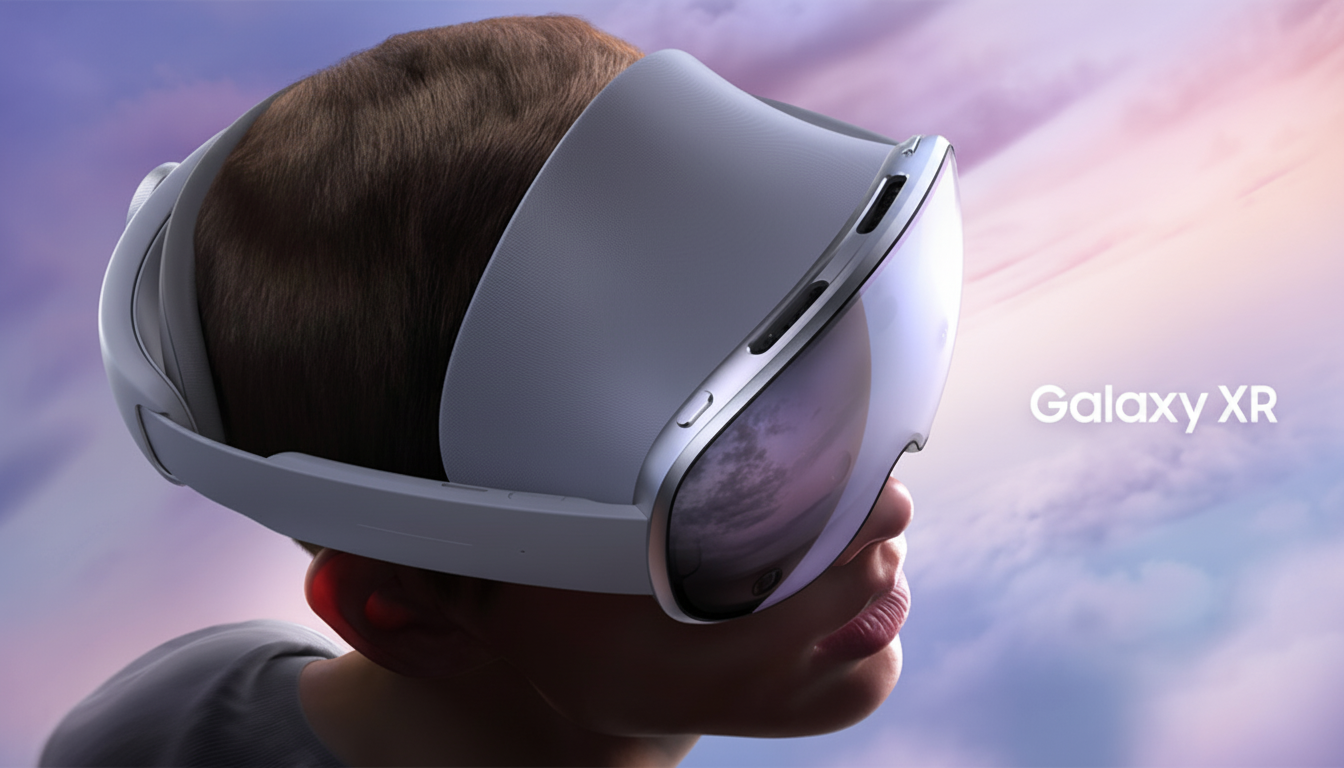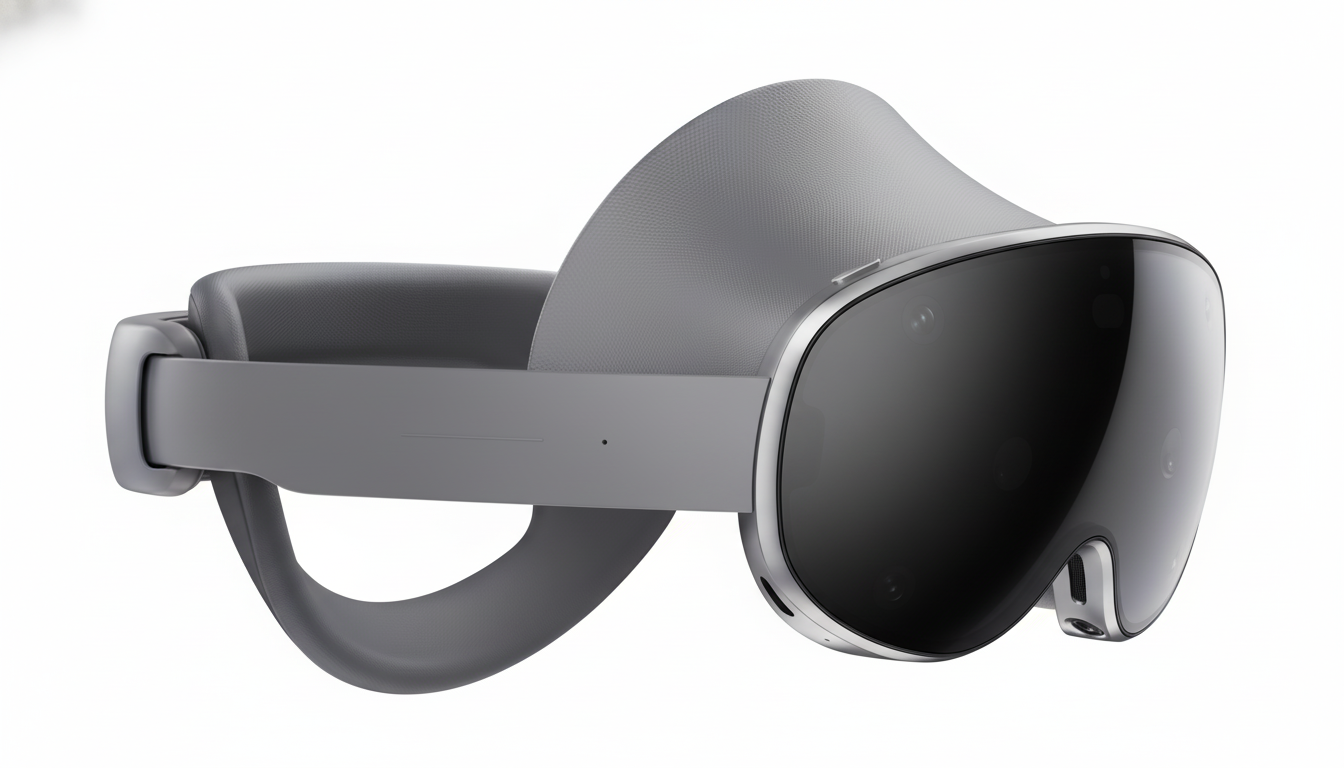So, Samsung’s Galaxy XR comes as the most reasonable non-Apple premium contender for mixed reality yet. It severely undermines Apple Vision Pro and knifes weight from it, becomes Android XR-centric with deep Gemini integration, and just promises smooth, consumer-friendly experiences. But is it a “Vision Pro killer,” or just a new flagship in an already-fragmented category?
Price and hardware trade-offs for Galaxy XR versus Apple Vision Pro
At about $1,800, Galaxy XR costs roughly 49% less than the $3,500 Vision Pro and instantly recasts value at the high end. Samsung’s design relocates the battery to a cabled pack — similar to Apple’s — for a significantly lighter headset. Company briefings put it at about 150 grams lighter than the Vision Pro, a gap felt during longer sessions.
- Price and hardware trade-offs for Galaxy XR versus Apple Vision Pro
- Comfort and high-quality passthrough matter for mixed reality
- Software and AI are the key differentiators for Android XR
- Apps and ecosystems are the real winners in XR adoption
- Productivity ambitions meet the reality of battery limits
- The platform play could be Samsung’s long-term edge
- Verdict: a serious rival, but not a Vision Pro killer yet

Battery life is the catch. Samsung quotes about two hours per charge, roughly in the same class as Apple’s pack. That’s acceptable for a movie or a burst of work, but not if you want to use it all day without plugging in. The other downside is that Samsung’s motion controllers are sold separately for approximately $250, which means it pushes the “including everything” kit up to over $2,000 if you want VR-native input for games and creative apps.
Comfort and high-quality passthrough matter for mixed reality
How a product handles the load and how comfortable it is can make or break mixed reality magic. Repositioning the battery off-head also makes Galaxy XR feel less top-heavy than many competitors. HD color passthrough is just as important: It’s what allows for your living room and virtual screens to exist simultaneously in a believable way. Apple set the bar high here; Samsung doesn’t need to clear it so much as underplay motion-to-photon latency and visual noise, so that work and media are comfortable.
Software and AI are the key differentiators for Android XR
The most interesting play is software. Android XR has been released with Gemini embedded in system-level operations. One real-world example Wagner showed the press was a request to Gemini to help declutter a cluttered workspace — snapping several windows into one neat layout in an instant. It’s a modest but not insignificant demo of AI as an OS feature, and not merely as an add-on in the form of chatbots.
With the XR version of Google Maps, it’s the splashier demo. Street-level immersion meshes with swooping city-scale views, and AI-stitched interiors of popular venues give you a way to “peek” inside places composed of user images. It’s one of the few experiences that seems as much at home on a headset as it does augmented to a phone.
Apps and ecosystems are the real winners in XR adoption
Headset hardware makes headlines; ecosystems determine longevity. Apple’s take relies on iPad apps, Apple TV, spatial photos and tight Mac mirroring. Samsung’s play rides Android’s wide reach and PC streaming applications such as Virtual Desktop to coax Windows into XR. For gaming, controller-forward experiences still dominate and the key VR titles are still divided by platform exclusivity — Meta and PlayStation VR each have a cluster of killer apps.

That’s why calling it a “killer” is premature. The Galaxy XR can stream Steam titles from a PC and run Android apps in giant virtual canvases, but it won’t open the door to every must-play VR game on day one. Meanwhile, market trackers like IDC say Meta still has a commanding share of global XR headset shipments — a sign that adoption is driven more by content libraries and price points than specs.
Productivity ambitions meet the reality of battery limits
Knowledge workers dream of an unlimited portable multi-monitor desk. In practice, two-hour battery windows break flow and web apps don’t necessarily behave like desktop software. Galaxy XR’s windowing is slick, and browser-based tools are maturing, but many teams will still need to use PC mirroring for real work — and that’s exactly where that battery ceiling comes into play. The physics are no different and Apple makes note of that; neither headset can yet leave a laptop aside for the full day.
The platform play could be Samsung’s long-term edge
The biggest strategic difference isn’t the headset — it’s the platform. Android XR is designed to scale across a variety of manufacturers, chipsets, and designs. That opens the door for thinner mixed-reality glasses and a wider price ladder, allowing partners such as Qualcomm and others to iterate quickly. Companies like Xreal have already demonstrated consumer appetite for a pair of lightweight AR glasses, and a powerful Android XR base might speed up the transition.
Analysts at firms like Bloomberg Intelligence and IDC have seen early sales of Vision Pro as narrow for a first-generation halo product, while there is growing interest in smart glasses due to convenience and social acceptance. If the focal point shifts from cumbersome headsets to ordinary-looking spectacles, a multi-OEM Android XR ecosystem might be best situated to ride that wave.
Verdict: a serious rival, but not a Vision Pro killer yet
Somehow, “Vision Pro killer” is the wrong frame. Well, Galaxy XR is a serious and more palatable rival that nails comfort and demonstrates real software promise on Android’s wings of openness. But ecosystem gravity, battery constraints and content exclusives keep Apple’s flagship — particularly Meta’s gaming-focused stable — more than in the fight.
If you’re an early adopter who loves Google’s services, PC streaming, and a lighter build for less cost, in general, that is difficult to ignore! For everyone else, the smartest play might be to watch the platform play itself out. Not all those “killer devices” may end up being a headset, actually — it could be the Android XR glasses that take their place after all.

